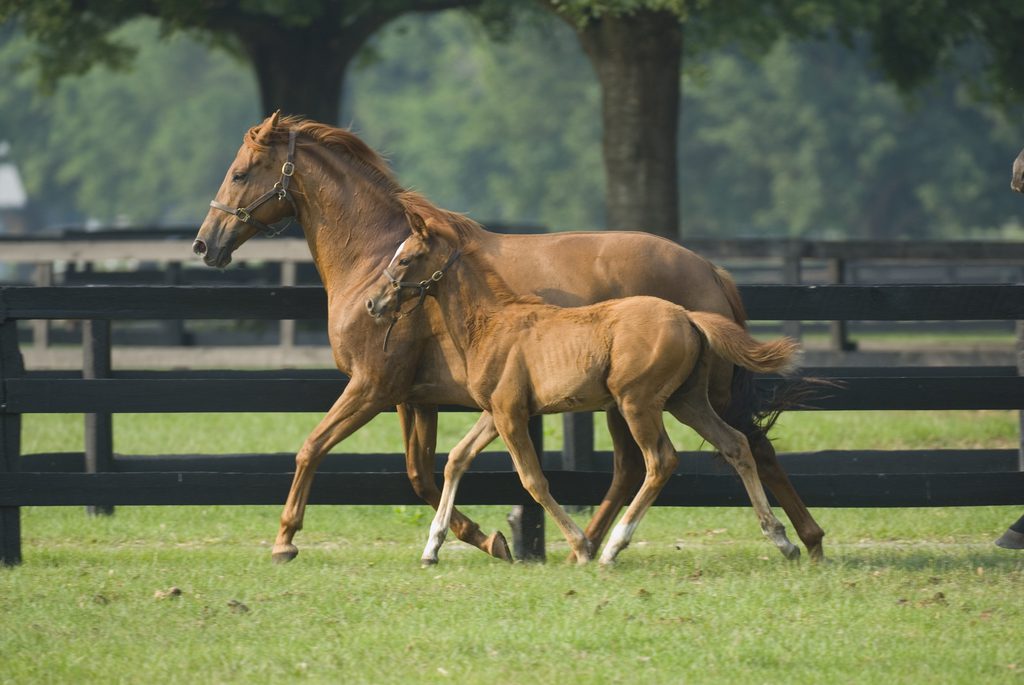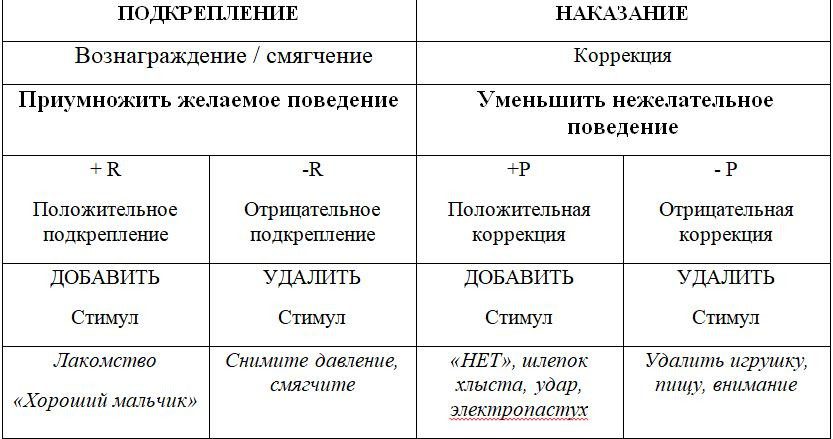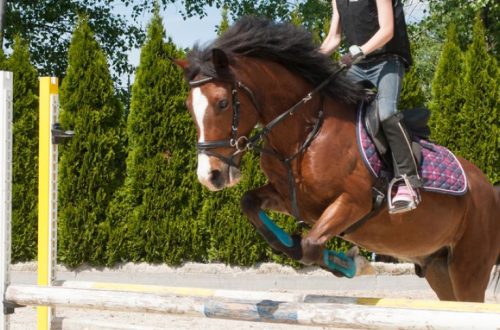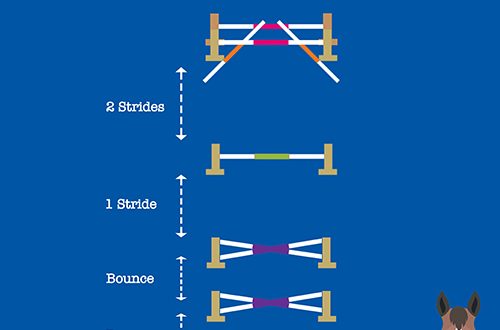
How do horses learn?
How do horses learn?
To become a teacher for a horse, you need to know how to approach the process of training it. How does a horse learn? How can I get her to understand us? How to behave in order to convey the necessary information to her as efficiently as possible?
The horse learns in several ways. These include:
·imprinting;
learning by observation;
·latent learning;
social learning;
addictive;
classical conditioning;
operant conditioning.
Let’s take a quick look at each of them!
Imprinting
In the very first hours of its life, the foal, having no previous experience, learns the basics necessary for survival, receives the most important information:
Who is his mother.
Who belongs to the herd and who does not.
· What is a danger, what is dangerous and what is not.
What do the body signals of other animals mean.
Where to find milk.
In the first 24 hours of life, the foal’s “hard drive” is “open” to record all the necessary information. This is necessary because horses in the wild are prey animals, and the foal should immediately, from birth, be able to immediately run after the herd if necessary.
Observational Learning
By simply observing the environment, a young horse learns more about how to recognize food and danger.
Latent learning
Over time, the foal naturally learns to make connections between different stimuli (stimulus A means no risk, stimulus B means danger, etc.). He gets to know the environment: dogs, cars, garbage cans, horse trucks, wooden floors, gravel, water, etc. This is how latent learning happens. What a horse has already become familiar with as a foal, in positive circumstances and with positive experiences, will cause less fear (or be perceived calmly) in adulthood.
social learning
The influence of the social environment is critical for young animals. A young horse needs to learn social skills and correct manners from other horses.
A young horse learns social skills by deliberately going too far during games. Adults in the herd automatically and consistently deal with any unruly behavior.
The speed of reactions necessary for survival, the horse can best learn only from other horses. No man can teach this to a horse.
Isolating a foal can lead to traumatic effects, just as with children. If a horse is raised in a pasture with only its mother and grows to the age of three, then it will not learn social skills to the same extent as a horse raised in a herd will.
Addiction
Through habituation, the horse learns that the stimulus is irrelevant and learns to shorten and finally lose its startle flight response. Habituation is a form of learning in which the horse repeatedly encounters a stimulus in order to reduce the startle response to that stimulus over time.
Here example of habituation to sound and visual stimuli:
The horse is placed in a pasture next to the railroad. A long freight train passes several times a day. The first time this will frighten the horse, but over time the fear will decrease because the horse will begin to understand that the train passing by is safe. After some time, when the train approaches, the horse will continue to graze peacefully, not paying attention to it.
It is important that the horse learns to adapt its behavior to the environment and to ignore meaningless stimuli. Otherwise, the horse, experiencing a lot of unnecessary fright caused by pointless stimulation, will spend too much energy (adrenaline production, increased heart rate, faster breathing, etc.).
The horse is quite able to get used to opening umbrellas, rustling, fluttering things, loud noises, ringing bells, car horns, applause, tractors, etc.
Getting used to phenomena of the same order, the horse will be able to generalize (for example, getting used to tractors, it will be able to classify as non-dangerous and trucks).
Classical conditioning
Classical conditioning is a form of associative learning (learning by association) – the horse learns and is aware that “this means this”. Consider Pavlov’s dogs: when they heard the ringing of a bell, they salivated, because the dogs knew that this sound was associated with the delivery of food.
Through classical conditioning, we can teach the horse certain vocal commands, body signals, or tools (such as a whip). The horse makes connections and associations with certain commands and signals and displays the specific behavior that these commands and signals require.
Through classical conditioning, you can teach your horse to trot at the word “trot”, teach him to hip in diagonally towards you at the signal of the whip, explain that “click” means a treat. Once the horse associates the “click” with the treat, you can use the clicker to close the gap between the performed behavior and the treat. Such “bridges” can appear in any form: clicks, whistles, and speech signals such as “Yes” or “Bravo”.
Most horses enjoy grazing. If you drive the same car every day and take your horse out to pasture right away, he will soon neigh at your car because he will associate the car with something pleasant.
If your stablemate always brings a sugar cube to your horse, the horse will soon googoo as soon as he hears the sound of his footsteps.
Unfortunately, horses associate not only positive phenomena, but also negative ones.
So, horses that do not load well into a horse carrier often associate it with a negative feeling. This may be because the horse has loaded under pressure for the first time or has experienced pain during loading (for example, hitting his head on a roof, or being frightened by whiplashes). As a result, the very sight of a horse carrier makes the horse feel threatened and exhibit appropriate behavior. The horse associates the horse carrier with “not good.”
When a horse is working with a rider who is always applying pressure, if the horse does not “accept” something new immediately (jump, water, spray, etc.), he may begin to perceive any new thing or situation with fear. The horse does not feel fear at first (only curiosity), but if the rider never allows him to explore new things and views the horse’s curiosity and need to explore as “indecisiveness” or even “resistance”, then the reaction of the horse will be the same as if the rider were exerting pressure. This can lead to the development of “conditioned fear” – the horse will begin to associate everything (!) New with pressure. The horse will make a logical generalization, and the rider, against his will, will teach the horse what he would like to fight.
operant conditioning
Operant conditioning involves learning in the form of cause and effect. Through this training, the horse learns and realizes that “when I do this, this happens”, makes connections between his own actions (for example, standing on the box with his front feet or taking the rein from the hands of the rider) and the consequences of these actions (for example, receiving a treat). as a reward or one of the forms of “NO” as a punishment).
Operant conditioning works with reinforcers, but it can also work with corrections (punishments).
The term “operant” means that a certain deviant behavior will be conditioned.
You can teach your horse the desired behavior and eliminate the unwanted behavior.
The desired behavior can be multiplied by adding a rewarding stimulus (the horse lifts its leg, you say “ok” and give it a treat).
The desired behavior can be multiplied by removing the stimulus (the horse follows the tension on the lead and you release the pressure).
Unwanted behavior can be reduced by adding a stimulus that punishes it (the electric shepherd’s “kick” prevents the horse from leaving the restricted pasture). It can also be reduced by removing the stimulus (this is often used when working with children – a favorite toy is removed when the child is mischievous).
You can represent the scheme of operant conditioning in the form of a table:

Devotion to one approach
Today, many horse owners are categorically opposed to punishment. Some even reject any form of pressure, wanting to work only with positive reinforcement. On the other hand, there are those who are against the use of treats, preferring to use the pressure building/release technique (negative reinforcement and positive correction).
People, being principal adherents of one approach, ignore the advantages of others. However, this leads to inflexibility, to an inability to provide the horse with individual training. But it is necessary – each horse is unique!
Also, some approaches may not work in certain situations. So, for example, in a stressful situation, a treat will not help – fearful horses are not interested in food.
Sometimes a person is prevented from taking a certain approach … his name. Names are just words, symbols to define something, however some people feel uncomfortable using words like “pressure” and “punishment”. Yes, the established associations are reflected in our beliefs and our perception of the world, but we must understand that in this way we can move on to a semantic discussion, and not to a practical one. Replace “punishment” with “correction” and “pressure” with “signal.” The essence of the phenomena will not change from this, but one could talk about the same approach using different words.
When it comes to training horses, you can do the following: observation:
Almost every rider uses negative reinforcement, even if they don’t want to admit it.
Some riders refer to what is actually “positive punishment” as “negative reinforcement.”
Some riders only use positive reinforcement, but in a manipulative manner, using an extremely commanding leadership style and literally “telling” the horse with voice commands what to do. Horses, like well-trained soldiers, obey all commands, but they do not have real “communication” with a person. The horse has a certain limited “vocabulary”, and it comes down to obeying commands. And those are the only “tricks” she knows. If it is “dressage tricks” then the horse will show a certain stiffness. Her coach had forgotten the essence of dressage.
Better to avoid extremes. Everything in nature is dynamic. We need to have the dynamic ability to move from +R to -R, say “no” (+P) and take away pleasure (-P), we need to feel free in the whole range of learning opportunities, be able to vary approaches depending on the situation, type of behavior and personality of the horse. Only then will we be able to achieve the results we need – the comprehensive development of the horse (physical, intellectual, emotional and spiritual).
Situational approach
Situational training involves choosing the approach(s) best suited for a particular horse, in a particular situation, at a particular point in time.
– R. Given that horses in the wild often deal with pressurization/depressurization in the herd, this is the technique most easily understood and accepted when used correctly (timing and dosage).
+ R. By using treats and praise, you can get your horse to do more than you’d like. The horse may become more task-averse due to the additional reward of a treat.
+ P. When the horse becomes more pushy and arrogant, you can act like an electric shepherd and warn the horse by projecting the idea “if I were you, I wouldn’t touch me.” If the horse makes an undesirable action, it will be his own choice, his own exploration in order to establish clear boundaries. You will work like an electric shepherd – absolutely (!) without emotions, without showing any form of anger, fear or disappointment. Like a calm, wise, adult mare in relation to a young horse.
– R. The horse should always see the delicacy as your gift to her, she should never have the thought that, having accepted the delicacy from your hands, she subjugated you and you were lower on the hierarchical ladder. Therefore, if the horse is too insistent on a treat, simply remove it – tell the horse that it belongs to you and should wait, show courtesy and education.
I prefer to use all the available tools, all strategies, both positive and negative reinforcement.
It is not necessary to resort to punishments, because “repetitions” can be used as a motivation strategy. Repetition is the mother of all skills. The better a horse performs in a particular behavior, the more likely it is to increase the frequency with which it exhibits it. Repetition creates good, positive habits.
We use “prevention” – we do not allow the horse to repeat unwanted behavior. This is a more effective strategy than “ignoring” the unwanted behavior because when you simply ignore the unwanted behavior, your horse can keep repeating it and honing the skill. This is a more effective strategy than “punishment” because punishment can cause fear or aggression. Where better to prevent unwanted behavior or redirect it.
“Redirection” gives the horse the opportunity to receive a reward if he chooses the right behavior (give up on the unwanted one that he was about to demonstrate). It’s about reinforcing the alternative, about getting the horse to do the right thing.
Either approach can be misused. It is not the approach that works, it is the person who uses the approach that works! Even the “best” approach/strategy/method/concept/tool can have dramatic consequences if used poorly!
Any tool is always in the hands of the person who uses it. Thus, each of us is an instrument in itself.
Some of the tools used in horse training are considered very controversial. So, for example, many people are opposed to whips or whips.
But a whip lying on the ground will not hit or hurt a horse. A whip in the hands of an aggressive, angry person is not at all the same as a whip in the hands of an emotionally stable coach.
The same applies to the bit and snaffle. It is you who connect with the horse through your “additions”: rein and snaffle; you are the rein, you are the snaffle.
Of course, whips can be used to inflict pain, and they also help us create more pressure.
But, if you use the whip properly, as an extension of your hand and energy, it won’t do any more harm than if it were lying on the floor. Therefore, if we start to “judge” the instrument, we must first of all judge the person.
You should not condemn any tool in order to seem more kind and loving horses.
Every tool, method, technique can be used with the best of intentions, but from the horse’s point of view, we will not act in the best way.
For example, riders who ride loose reins so as not to harm the horse’s mouth may allow the horse to move with a sagging back, which will negatively affect its health.
Improper clicker work can confuse the horse and throw him out of mental balance, provoke stress.
A “mandatory” style of free-riding training can overwhelm or destroy a horse’s spirit.
Riders with good energy and feeling are valued by the horse because of their refined and clear interaction with the horse. They can use the whip to make themselves “horizontal” and long like a horse, because with the whip they can expand their energy bubble.
When we think only about a tool, a method, a technique, it makes us narrow-minded and ignorant, because we close our eyes to the big picture.
When a tool, method, or technique is used, it’s all about perspective. You should always analyze the big picture.
Is the rider task and goal oriented or is he more horse oriented and puts his needs first?
What is the emotional state of the rider? Does he feel angry, angry, sick, worried, tense? Or does he feel grateful, peaceful, playful, and successful?
What training style is the rider using? Is he the “boss” or is he more of a “trainer” for his horse?
Does the rider use the tool with feeling and organically or technically, mechanically?
Is the rider missing the point of horse training?
What is the quality of the relationship between rider and horse? We use tools to establish a connection between ourselves and our horses, but before any tool can be used, a connection must be established between rider and horse.
When we judge a tool, we need to keep more variables in mind.
Learn how to use the tool
The “avoidance” strategy is fine if you can’t use the tool correctly, but wouldn’t it be better to learn how to use it by defining all the variables?
Even a cordeo can cause discomfort to the horse if it is pulled all the time. If desired, you can turn the halter into an instrument of torture.
Instead of forbidding yourself to use certain tools, it is better to learn how to work with them, and, most importantly, learn how to properly use energy when using them.
Tools are not only your physical extension. They reflect the state of your mind and your emotions.
For example, your rein may be thrown, but the horse will feel your emotional stress through vibrations on it.
We need to learn how to master our thoughts, energy and emotions, to manage them.
Curb your emotions and be sure that you are always calm, focused, stable and relaxed.
Tune your energy so that when working with a horse, use it at the right time and in the right amount.
Maraica de Jong; ptranslation by Valeria Smirnova based on site materials http://straightnesstraining.com.





